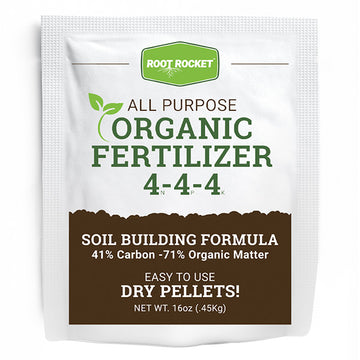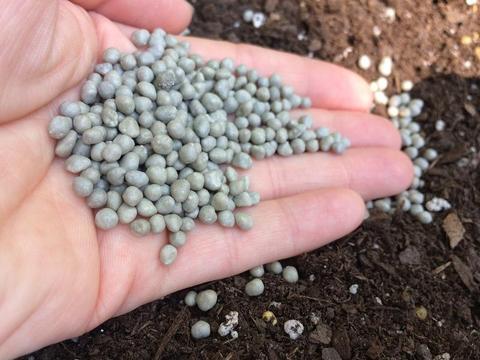So, I was surprised to learn that fertilizing in winter is a thing! I should know this. I mean, I have a degree in horticulture and have worked with plants or in the plant biz most of my life. I have just always thought that you fertilize when a plant is actively growing to help it along or right before it starts actively growing. But fertilizing in winter (or late fall depending on your climate) can actually offer nutrients to strengthen roots (that do often continue to grow in winter despite dormancy.) Fertilizing helps it to prepare for winter dormancy and gives it nutrients to store for better growth in spring. Wow! It all makes sense!
Fertilizing In Winter
Fertilizing Plants And Trees In Winter
Can shrubs and trees be fertilized in winter? They can and, in fact, fertilizing in winter can be an excellent way to have your tree ready to grow, grow, grow in spring.
Be sure to wait until your tree or shrub is beginning to enter dormancy. Look for leaf color changes and the start of leaf drop to ensure you don’t fertilize too early.
Feed with a slow release fertilizer anytime from the early stages of dormancy to before the ground is frozen to provide nutrients for your plant to get through winter and prepare for spring.
Why should we fertilize plants and trees in winter? When we feed our plants in winter we are feeding the roots which still often continue to grow even in winter. This makes our trees and plants stronger, sturdier, and more durable. These healthy, strong plants tend to emerge from dormancy faster and grow quicker than unfertilized plants.
Fertilizing during winter is also safer for deciduous plants. There isn’t a risk for leaf burn.
Warmer climates (growing zones 8, 9, 10, and 11) can fertilize any plants and trees in winter because they are still growing actively. This is also a great time to plant in these warm climates. Slow release fertilizers can be used on newly planted trees to encourage root growth and quicker establishment. It can also be used on established plants providing nutrients for growth and health.
Things to Avoid When Fertilizing in Winter
- You want to avoid feeding plants when they are still growing in fall because it can stimulate tender, new growth that can be damaged by freezing temperatures.
- Don’t apply fertilizer when the ground is frozen. Applying fertilizer to the ground when the soil is frozen is pointless as it won’t be able to be absorbed. (This applies to grass too.)
Fertilizing Grass in Winter
Can grass be fertilized in winter? Yes and no. It really depends on where you are and what kind of grass you have. Late fall may be better than winter for colder regions. The absolute best time to fertilize your lawn is just before the expected frost date. The goal is the same when you feed grass in late fall or winter as it is with dormant plants. You are feeding the roots to build a better lawn overall. The nutrients are absorbed, some are utilized immediately and others are stored for when they are needed in spring. By winterizing your grass, you will have a lush, green lawn during the growing season.
Winterizing Your Lawn
- Aerate your lawn right before the expected first frost of the year. Aerating opens your lawn up to better water, nutrient, and air penetration. It also reduces soil compaction.
-
After you aerate it is time to feed your grass. Use Lesco 32-0-3 Fertilizer in November or December for tall fescue lawns. Water this fertilizer well or try to time your application before a nice rain. Warm season grasses should not be fertilized in winter.
- Keep your lawn clean and free of debris including lawn furniture and toys.
- Try to avoid walking on your dormant lawn. This causes compaction and weakens your grass and its roots.
So, hopefully you have learned something about fertilizing in winter. I know I have. It makes so much sense now. You can fertilize deciduous trees and shrubs in winter to help prepare them for spring. You can fertilize cool season grasses like fescue in winter to strengthen their root systems. You can winterize your lawn to improve the look and quality of your grass during the growing season. Happy planting... and happy winter fertilizing!
For more winter gardening information, check out our article on Trees to Plant in Winter.
You might also like:
Christmas Tree Gifts
Gifting Trees By Occasion
Winter Plants To Add To The Landscape




